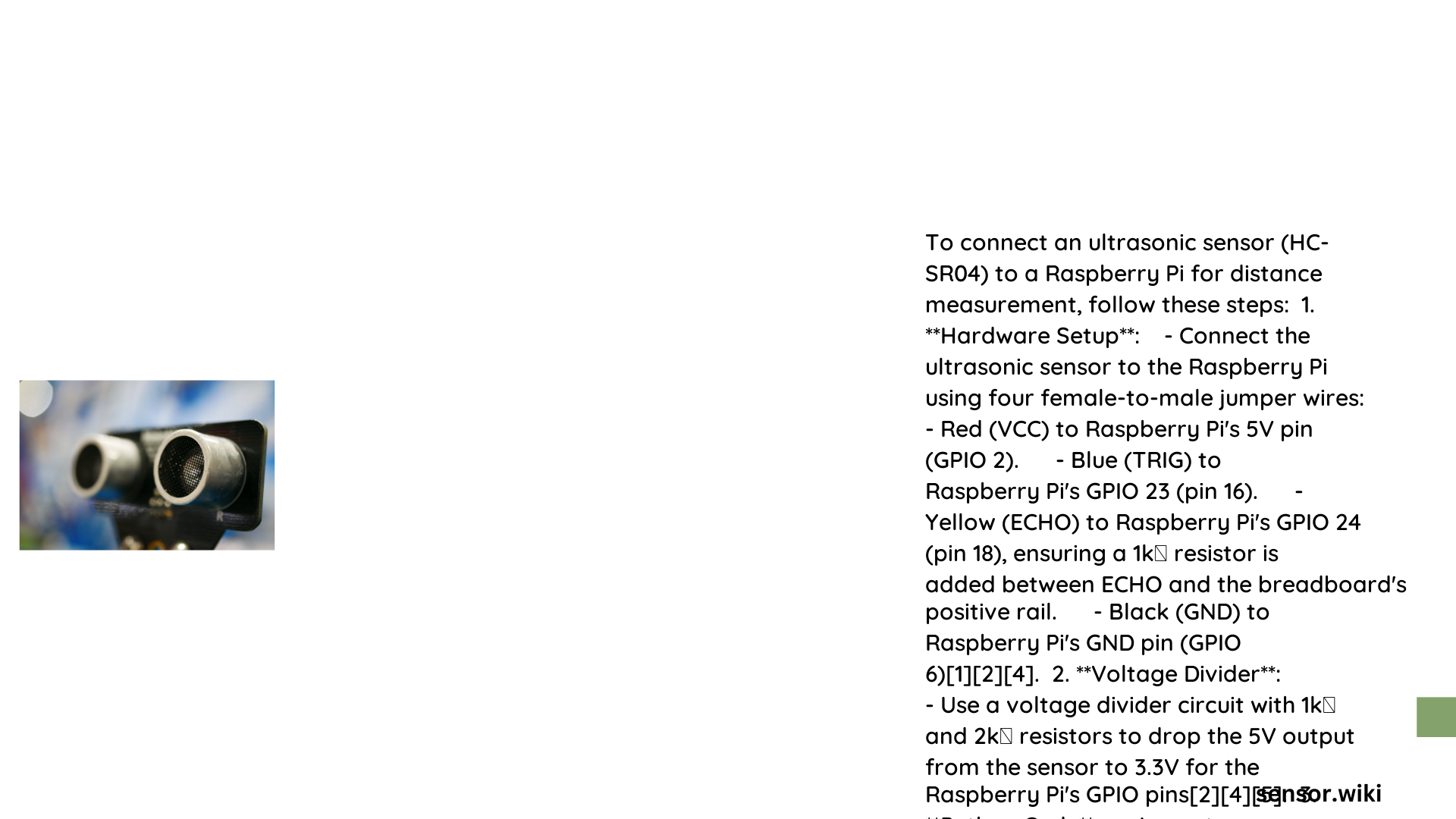The Raspberry Pi ultrasonic sensor tutorial provides a comprehensive guide for makers and electronics enthusiasts to understand distance measurement using the HC-SR04 sensor. This tutorial covers essential aspects of connecting, configuring, and programming the ultrasonic sensor with Raspberry Pi, enabling precise object detection and ranging capabilities across various projects and applications.
What is an Ultrasonic Sensor?
An ultrasonic sensor is a non-contact distance measurement device that uses high-frequency sound waves to detect and measure distances between objects. The HC-SR04 sensor specifically operates by emitting ultrasonic pulses and calculating distance based on the time taken for sound waves to return after hitting an object.
Why Use Ultrasonic Sensors with Raspberry Pi?

| Advantage | Description |
|---|---|
| Non-Contact Measurement | Measures distance without physical touch |
| Low Cost | Affordable sensor for multiple projects |
| High Precision | Accurate distance measurements |
| Wide Application Range | Suitable for robotics, automation, security |
How to Connect HC-SR04 Sensor?
Required Components
- Raspberry Pi (3/4)
- HC-SR04 Ultrasonic Sensor
- Breadboard
- Jumper Wires
- Resistors (1kΩ and 2kΩ)
Wiring Steps
- Connect VCC to 5V pin
- Connect GND to ground pin
- Connect TRIG pin to GPIO 23
- Connect ECHO pin through voltage divider to GPIO 24
What Python Code Works for Distance Measurement?
import RPi.GPIO as GPIO
import time
# GPIO Configuration
TRIG_PIN = 23
ECHO_PIN = 24
def measure_distance():
# Trigger sensor pulse
GPIO.output(TRIG_PIN, True)
time.sleep(0.00001)
GPIO.output(TRIG_PIN, False)
# Measure pulse duration
pulse_start = time.time()
while GPIO.input(ECHO_PIN) == 0:
pulse_start = time.time()
pulse_end = time.time()
while GPIO.input(ECHO_PIN) == 1:
pulse_end = time.time()
# Calculate distance
pulse_duration = pulse_end - pulse_start
distance = pulse_duration * 34300 / 2
return round(distance, 2)
What Are Common Challenges?
Potential Issues
- Inaccurate readings
- Signal interference
- Limited measurement range
- Voltage compatibility
How to Troubleshoot Sensor Problems?
- Check physical connections
- Verify power supply
- Ensure clean sensor surface
- Test with different objects
- Calibrate sensor readings
What Projects Can You Build?
- Robotic obstacle detection
- Parking assistance systems
- Proximity alert mechanisms
- Automated inventory tracking
- Home security sensors
Technical Specifications
| Parameter | Value |
|---|---|
| Operating Voltage | 5V |
| Measurement Range | 2-400 cm |
| Accuracy | ±3 mm |
| Frequency | 40 kHz |
Best Practices
- Use voltage divider for signal conversion
- Implement error handling
- Consider environmental factors
- Regular sensor calibration
Recommended Learning Path
- Master basic connections
- Understand Python programming
- Experiment with sample projects
- Explore advanced applications
- Join maker communities
Conclusion
The Raspberry Pi ultrasonic sensor tutorial provides a foundational understanding of distance measurement techniques, enabling makers to create innovative projects with precise sensing capabilities.
